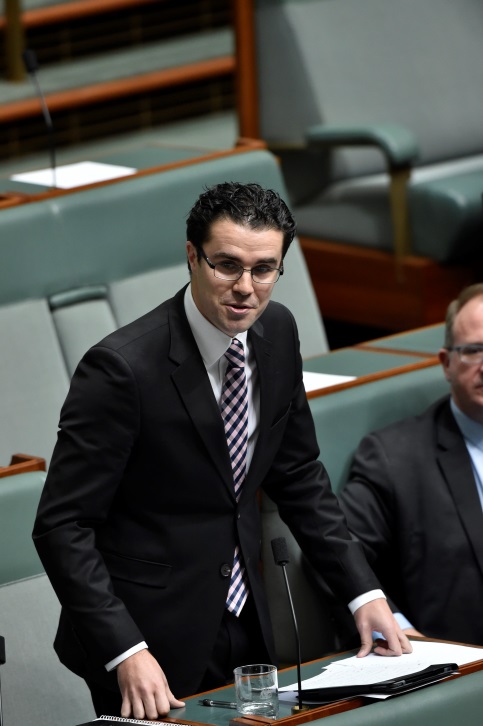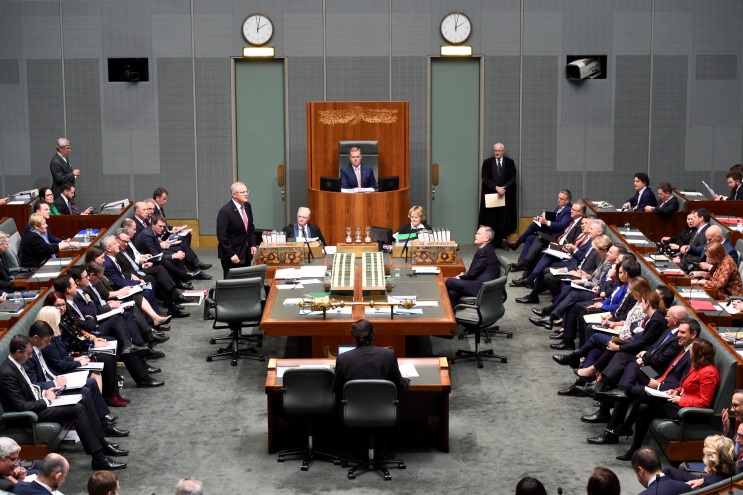This infosheet includes a concise explanation of some terms used in parliamentary procedure.
Absolute majority—a majority of the membership of the House: currently 76 Members in a House of 151. This is only necessary occasionally, mostly a simple majority is sufficient for a decision of the House to be effective.
Adjournment of debate—when a debate is not completed, a Member who has not spoken or who moved the initial motion may move that debate be adjourned—to a later hour or to the next sitting.
Amendments—may be moved to change the question on the second reading of a bill, to the detail (text) of a bill, and to the terms of a motion. Once moved, and seconded if necessary, debate follows and a decision is made on the amendment before the original question is decided.
Casting vote—the vote the Speaker is required to make when the numbers on a question are evenly divided. The Speaker does not normally have a vote but, when the numbers are equal, the Speaker’s casting vote decides the question.
Cognate debate—the House may allow a combined debate on linked bills or motions. Bills are introduced separately and, when debate is resumed on the first bill in a linked ‘package’, the House may agree to a combined second reading debate. When that is completed, each bill is finalised separately generally without further debate.
Consideration in detail—the text of a bill may be considered in detail after the second reading has been agreed to. Amendments to the detail of a bill’s text may be proposed by Ministers, or private Members (usually non-government). A detail stage may occur even if no detail amendments are proposed. (See also Infosheet No. 7 Making laws.)
Daily Program—the House’s informal agenda for each sitting day. (See also ‘Notice Paper’ below.)
Delegated legislation—legislation not made directly by parliament but under the authority of an Act, for example by a Minister. It is usually open to rejection by the House or the Senate. (See also Infosheet No. 7 Making laws.)
Debate—the discussion that occurs between a Member moving a motion and the House deciding on it. Rules include: that speeches be relevant to the question; a Member may not speak twice (generally); Members address the Chair, not each other; Members refer to other Members by their title or electorate; and Members may not use offensive or disorderly words or reflect on other Members. Debate usually ends when no Member rises to speak and the mover of the motion has spoken in reply. (See also Infosheet No. 14 Making decisions—debate and division.)
Division—most questions are decided on the voices for the ‘ayes’ (those in favour of a motion) or ‘noes’ (those against). If more than one Member disputes the Speaker’s call as to whether the ‘ayes’ or ‘noes’ have it, there is a formal count (a division). Members voting ‘aye’ move to the right of the Chair, the ‘noes’ to the left. (See also Infosheet No. 14 Making decisions—debate and division.)
Federation Chamber—The Federation Chamber of the House of Representatives is essentially a debating committee, established to be an alternative venue to the Chamber of the House for debate of a restricted range of business. It operates in parallel with the Chamber of the House to allow two streams of business to be debated concurrently. Since its inception in 1994 the Federation Chamber (then known as the Main Committee) has become increasingly important in managing the time allocated to House business. (See also Infosheet No. 16 The Federation Chamber.)
Indulgence—the Chair may grant indulgence, or permission to: a Member to make a statement or to seek information about proceedings; and a Minister to correct or add to an answer.
Leave of the House—the House may grant leave to a Member who seeks leave to do something that is not provided for in the standing orders. Leave is by universal consent of the House so, if one or more Members object, leave is not granted.
Motion—a formal proposal to the House that it take action or decide on a matter or express an opinion, eg, ‘I move: That this bill be now read a second time’. Parliamentary procedure is built on the moving of motions, debate on them, and voting on them. (See also Infosheet No. 14 Making decisions—debate and division.)
Notice—a written notice by a Member who intends to introduce an item of business to the House, either a motion or bill. (See also Infosheet No. 14 Making decisions—debate and division.)
Notice Paper—official document of the House, published by authority of the Clerk, showing all of the business before the House (Chamber and Federation Chamber) on the day for which it is issued. (Although not technically part of the Notice Paper, questions in writing and information on the Speaker’s panel, committees and statutory bodies, also appear in the Notice Paper).
Order of the day—an item of business that has been introduced previously, was not finalised, and is listed for further consideration on a later day.
Parliamentary privilege—the special legal rights and immunities that apply to each House of Parliament, its committees and Members, and participants in its proceedings. This term also refers to the power that the Houses have to deal with offences (contempts) that interfere with their functions. The best known and most significant privilege is that of freedom of speech; this enables Parliament to debate and consider matters without legal restriction. Members taking part in proceedings in Parliament enjoy absolute privilege—protection from the ordinary law—in respect of what they say. (See also Infosheet No. 5 Parliamentary privilege.)
Private Members’ business—private Members (ie, backbenchers and Shadow Ministers) may lodge notices to be moved and debated on sitting Mondays. Private Members’ notices (and orders of the day) may be moved and debated at the times allowed on Mondays under the standing orders, if selected by the Selection Committee for introduction (or further debate). (See also Infosheet No. 6 Opportunities for private Members.)

Time is reserved each sitting Monday for private Members’ business
in the House and Federation Chamber
Question—the proposal being debated and that will be decided on by the House when the debate is complete. There is usually a question before the House, eg, ‘That this bill be now read a second time’; ‘That the motion be agreed to’ etc.
Questions in writing—Members may lodge questions in writing for Ministers to answer, also in writing. These questions usually seek greater detail than questions asked at Question Time, and the rules are applied more stringently. (See also Infosheet No. 1 Questions.)
Questions without notice (Question Time)—each sitting day at 2 pm for approximately 70 minutes, private Members may ask Ministers oral questions on matters for which they are officially responsible. (See also Infosheet No. 1 Questions.)

The accountability of the government is demonstrated most clearly and
publicly at Question Time on each sitting day, when questions without notice are put to ministers
Quorum—the minimum number of Members who must be present to constitute a meeting of the House. In a House of 151 Members a quorum is 31 Members (including the Speaker or other Member in the Chair). In the Federation Chamber a quorum is one government Member, one non-government Member, and the Chair.
Relevance—Members may speak only on the subject of the question before the House (be relevant) except in adjournment debates; on the Address in Reply; and the second reading stage of the main Appropriation bill (when public affairs may be debated).
Seconder—when a private Member moves a motion, a seconder is usually required (to formally support the motion). The seconder can be any Member (including a Minister). (See also Infosheet No. 14 Making decisions—debate and division.)
Simple majority—a majority of the Members present and voting.
Standing orders—the formal rules of procedure adopted by the House to regulate its proceedings. Other rules and conventions are also observed by the House; these are not imposed by the standing orders but are part of the House’s practice.
Vote—at the end of debate, the Chair puts the question to the House and asks Members who are in favour to say ‘aye’ and against to say ‘no’. The Chair announces whether he or she considers the majority have voted for or against the question. Often a decision ‘on the voices’ is sufficient. But if more than one Member challenges the Chair’s opinion of the vote on the voices, the question is decided by a formal vote—taken by division. (See also Infosheet No. 14 Making decisions—debate and division.)
Votes and Proceedings—the formal record of House decisions and actions: its minutes.
For more information
House of Representatives Practice, 7th edn. Department of the House of Representatives, Canberra, 2018.
Images courtesy of AUSPIC.